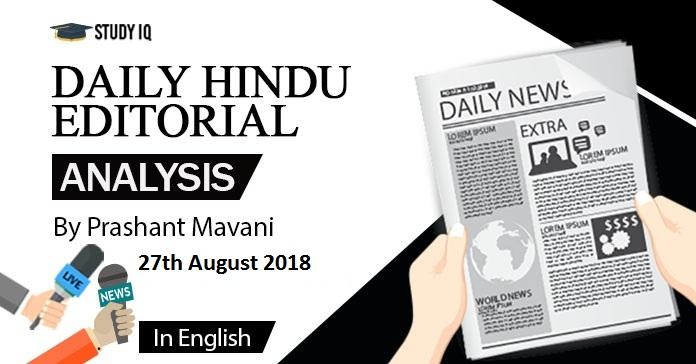Table of Contents
Council conundrum
• Odisha wants to join the group of States that have an Upper House.
• 2015: a committee set up to study the functioning of the second chamber in other States and make recommendations.
• State Cabinet: approved a 49-member Legislative Council
• The process of creating an Upper House is lengthy. 1. State Assembly has to pass a resolution for the creation of the Council by a majority of its total membership. 2. Thereafter, Parliament has to enact a law to create it.

Advantages
1. A forum for academicians and intellectuals
2. A more sober and considered appraisal of legislation
Disadvantage
1. Forum for politicians who are not able to get elected
2. An unnecessary drain on the exchequer
3. Graduates are no longer a rare breed
• Today, legislatures draw their talent both from the grassroots level and the higher echelons of learning.
• The Rajya Sabha’s case is different as it represents the States rather than electoral constituencies.
• It is also a restraining force against the dominance of elected majorities in legislative matters.
Powell doctrine
• U.S. Federal Reserve Chairman Jerome Powell strongly defended the current gradual approach to raising interest rates.
• He emphasised the imprecise nature of economic variables such as unemployment and inflation in the modern economy in drawing attention to the risks of raising rates either too fast or too slow.
• He hinted that “risk factors abroad” could lead to a change in the Fed’s policy stance in the future.
• American economy: strong pace of growth, inflation is ok, unemployment at a 20 year low.
• The Fed’s tightening policy stance has rattled several emerging markets, most notably Turkey and Brazil, which have seen their currencies tank under selling pressure.
• U.S. central bank has historically been non-committal when it comes to framing policy with the concerns of emerging markets in mind.
Article 35A and the basic structure
• Article 35A infringes the Constitution’s basic structure?
• Article 35A was inserted into the Constitution as part of a raft of amendments made through a 1954 presidential order, imposed under Article 370.
• Broadly, it empowers Jammu and Kashmir (J&K) to not only define a class of persons as constituting “permanent residents” of the State but also allows the government to confer on these persons special rights and privileges with respect to matters of public employment, acquisition of immovable property in the State, settlement in different parts of the State, and access to scholarships or other such aids that the State government might provide.
• The Article further exempts such legislation from being annulled on the ground that they infringe one or the other of the fundamental rights guaranteed by the Constitution.
• India’s Constitution, as the political scientist Louise Tillin has explained, establishes a form of asymmetric federalism, in which some States enjoy greater autonomy over governance than others.
• This asymmetry is typified by Article 370 — a provision, as Ms. Tillin writes, which was debated for over five months before forming part of the Constitution as adopted in 1950.
• In its original form, Article 370 accorded to J&K a set of special privileges, including an exemption from constitutional provisions governing other States.
• What’s more, in accord with J&K’s Instrument of Accession, it restricted Parliament’s powers to legislate over the State to three core subjects: defence, foreign affairs and communications.
• Parliament could legislate on other areas only through an express presidential order, made with the prior concurrence of the State government.
• Where those subjects went beyond the Instrument of Accession, the further sanction of the State’s Constituent Assembly was also mandated.
• Finally, the Article also granted the President the power to make orders declaring the provision inoperative, but subject to the condition that this authority could be exercised only on the prior recommendation of the State’s Constituent Assembly.
• Presidential order which introduced Article 35A makes it clear that changes made to the Constitution
The larger picture on GDP numbers
• There are three distinct aspects to the controversy.
1. Why was the back series —now the bone of contention — needed?
2. What do the data show?
3. Why was the rate of growth during the UPA regimes higher?
• An economy produces a large number of goods and services and new ones are added all the time.
• The production of all these items has to be estimated in order to calculate the rate of growth of the economy.
• It is interesting that the criticism is more about the causes of the higher rate of growth under the UPA than the methodology of the study.
• The government should consider leaving the data debate to experts and not making it a political one.
Until dams do us part
• The tragedy in Kerala has highlighted the dangers of excess water accumulation in dams.
• The 4,700 large dams built since 1947 have cumulatively displaced 4.4 million people. This makes dams the single largest cause for displacement post-Partition.
• Dams have displaced the poorest of India’s people in favour of richer farmers and urban residents, often with little or no compensation.
• Over 85% of them are used in agric
Important News
• Kerala prepares memo seeking more Central funds
• Economy has come a long way: Jaitley
• International Monetary Fund (IMF) report on India in 2018 had noted improvements in indicators such as inflation, fiscal deficit, current account deficit, infrastructure, power sector, and allocation of natural resources.
• Paswan backs idea of all-India judicial service
• Union government alone could not do this as a constitutional amendment was required. A general consensus should emerge among political parties for pushing the measure through.
• N. Korea accuses U.S. of ‘hatching a criminal plot’

Financial News

Financial News























 WhatsApp
WhatsApp